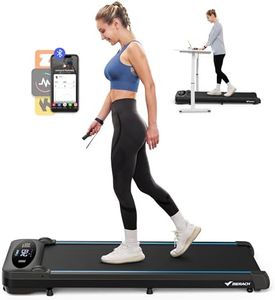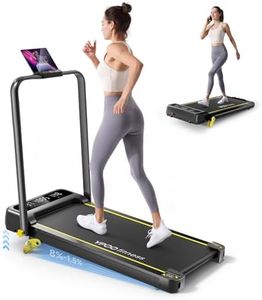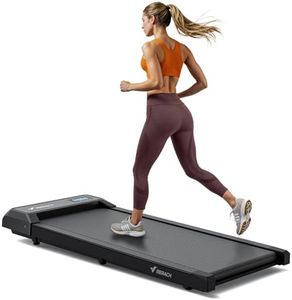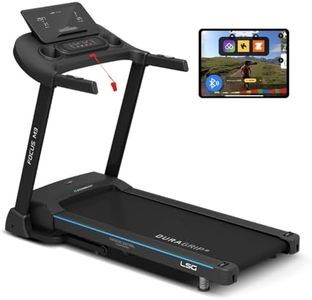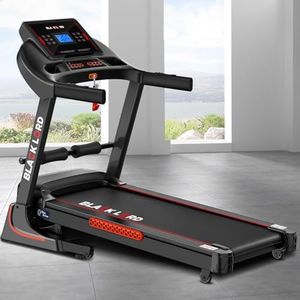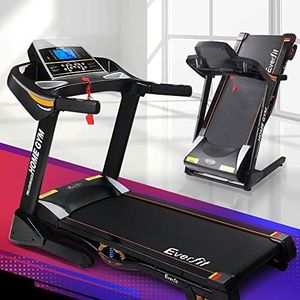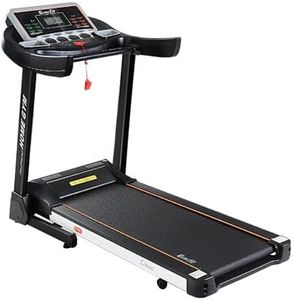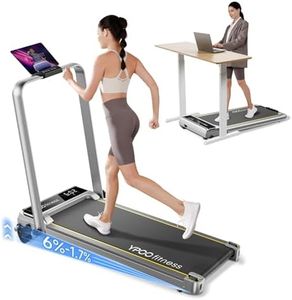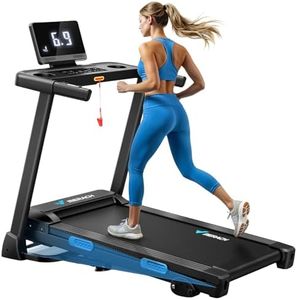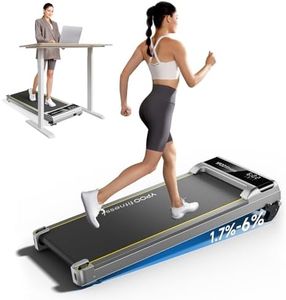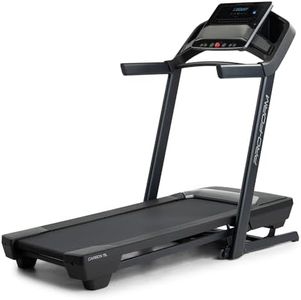We Use CookiesWe use cookies to enhance the security, performance,
functionality and for analytical and promotional activities. By continuing to browse this site you
are agreeing to our privacy policy
10 Best Incline Treadmills
From leading brands and best sellers available on the web.Buying Guide for the Best Incline Treadmills
Picking the right incline treadmill can make a huge difference in your home exercise routine. While many treadmills look similar, they offer a range of features and capabilities that can affect your experience and results. It’s important to understand your fitness goals, the space you have available, and how you intend to use the treadmill, so you can focus on the specs that actually matter for you.Incline RangeThe incline range refers to how much the treadmill’s running deck can slope upwards, mimicking walking or running uphill. This feature is important because increasing the incline can help you burn more calories and target different muscle groups. Treadmills usually offer a range from a flat surface (0%) up to around 10-15% for standard models, while some specialized incline trainers may go as high as 40%. For casual walkers, a maximum incline of 10% is usually enough. Those looking to intensify workouts or prepare for hiking or mountain running may prefer models with steeper inclines. Consider your workout style and fitness goals to decide what incline range will be most beneficial for you.
Running Surface SizeThe running surface size is the length and width of the belt where you walk or run. This matters for comfort and safety, especially for taller users or those with a longer stride. Compact treadmills may offer a surface about 45 inches long and 16 inches wide, which is fine for walking, but running is more comfortable on models that offer 55 inches or longer and at least 20 inches wide. If you mostly walk, a smaller deck suffices; if you run or have longer legs, choose a treadmill with a longer, wider belt.
Motor PowerThe motor power, usually measured in horsepower (HP) or continuous horsepower (CHP), affects how smoothly and reliably the treadmill operates, especially at higher inclines or speeds. Lower-powered motors (1.5-2.0 CHP) are sufficient for walking, while running or frequent incline training typically benefits from 2.5 CHP or higher. Consider how you’ll use the treadmill most: walkers can be content with less power, while dedicated runners or multi-user households should lean toward a stronger motor.
Cushioning SystemCushioning refers to how much impact absorption the treadmill provides, helping to reduce stress on your joints. Some treadmills offer adjustable cushioning, while others have a fixed system. Softer cushioning is gentler for walking or running, helpful if you have joint sensitivities or are recovering from an injury. If you’re training for outdoor running, firmer decks may better mimic road surfaces. Pick the cushioning that matches your comfort preference and training needs.
Speed RangeThe speed range indicates how fast the treadmill can go, usually measured in miles per hour (mph) or kilometers per hour (km/h). Entry-level treadmills might top out at 8-10 mph, while others can reach 12 mph or more. Walkers or casual joggers won’t need the highest speeds, but if you plan to do sprints or interval workouts, consider a model that can reach those higher speeds. Align your typical workout intensity with the speed range.
Programs and ConnectivityIncline treadmills can come with built-in workout programs and connectivity features like Bluetooth, Wi-Fi, or app compatibility to track progress or stream interactive workouts. A wide variety of programs can keep routines interesting and motivated. If you value tech features and guided workouts, look for machines with a robust selection. Otherwise, simpler treadmills may suffice if you prefer to manually control your workouts.
Folding and Storage FeaturesMany incline treadmills offer folding designs, making them easier to store in smaller spaces. Some models use a hydraulic system for easy lifting and lowering. This is important if you have limited space or need to move the treadmill frequently. Choose a folding treadmill if space-saving is a concern, but ensure it feels stable and secure when in use.
